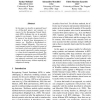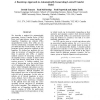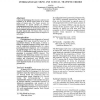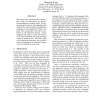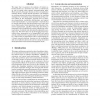EMNLP
2009
13 years 10 months ago
2009
Polarity lexicons have been a valuable resource for sentiment analysis and opinion mining. There are a number of such lexical resources available, but it is often suboptimal to us...
NAACL
2010
13 years 10 months ago
2010
In this paper, we describe an approach based on off-the-shelf parsers and semantic resources for the Recognizing Textual Entailment (RTE) challenge that can be generally applied t...
EMNLP
2010
13 years 10 months ago
2010
We describe a model for the lexical analysis of Arabic text, using the lists of alternatives supplied by a broad-coverage morphological analyzer, SAMA, which include stable lemma ...
CORR
1999
Springer
13 years 12 months ago
1999
Springer
We describe a method for automatically generating Lexical Transfer Rules (LTRs) from word equivalences using transfer rule templates. Templates are skeletal LTRs, unspecified for ...
COLING
1994
14 years 1 months ago
1994
A theoryof interlanguage(IL)lexiconsis outlined,with emphasis on IL lexical entries, based on the HPSG notion of lexical sign. This theory accounts for idiosyncratic or lexical tr...
COLING
1996
14 years 1 months ago
1996
The focus of this article is the integration of two different perspectives on lexical semantics: Discourse Representation Theory's (DRT) inferentially motivated approach and ...
ACL
1997
14 years 1 months ago
1997
We present and experimentally evaluate a new model of pronunciation by analogy: the paradigmatic cascades model. Given a pronunciation lexicon, this algorithm first extracts the m...
ACL
1997
14 years 1 months ago
1997
Verbal and compositional lexical aspect provide the underlying temporal structure of events. Knowledge of lexical aspect, e.g., (a)telicity, is therefore required for interpreting...
COLING
2000
14 years 1 months ago
2000
We argue that in general, the analysis of lexical cohesion factors in a document can drive a summarizer, as well as enable other content characterization tasks. More narrowly, thi...
ACL
1998
14 years 1 months ago
1998
The lexical acquisition system presented in this paper incrementallyupdates linguisticproperties of unknown words inferred from their surrounding context by parsing sentences with...

